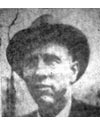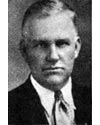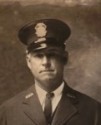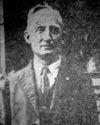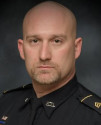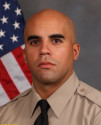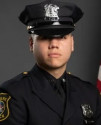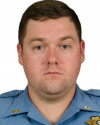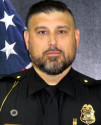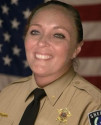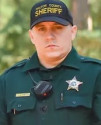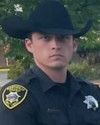Greene County Sheriff's Office, Missouri
End of Watch Saturday, January 2, 1932
Add to My HeroesMarcell C. Hendrix
Sheriff Hendrix was shot and killed as he attempted to enter the farmhouse of two suspects.
Sheriff Hendrix served with the Greene County Sheriff's Office for exactly three years.
Two brothers considered local petty burglars killed a total of seven Law Enforcement Officers. After they killed Town Marshal Mark Noe on June 2, 1929, a massive manhunt began for the suspects. The two suspects were located at the family farmhouse on January 2, 1932. They had come to town to visit their mother for the Christmas holiday. A raiding party of eleven officers was formed to arrest the two brothers. As the officers surrounded the farmhouse gunfire erupted and in the end six officers lay dead.
The suspects escaped, and fled to Texas. They were located there by Houston Police and as police moved in the two suspects committed suicide.
Bio
- Age 44
- Tour 3 years
- Badge Not available
Incident Details
- Cause Gunfire
- Weapon Shotgun
- Offender Committed suicide
Most Recent Reflection
View all 12 ReflectionsJUSTICE STORY: Cop killing brothers’ reign of terror
NEW YORK DAILY NEWS
MAR 12, 2022
Sheriff Marcell Hendrix was first to die.
“They’ve got me,” he called out to his men as a shotgun blast ripped into his chest. “You’d better run.”
Another volley hit deputy sheriff Wiley Mashburn, splitting his face.
Within minutes, four more Springfield, Mo., officers lay dying. Three others were wounded.
Their deaths on the cold, gray afternoon of Jan. 2, 1932 became known as the Young Brothers Massacre. It conferred a measure of immortality upon a pair of lowlifes.
That day, the brothers — career criminals Harry, 27, and Jennings, 35 — made it into the record books of American crime. Their shootout is said to be the largest single mass killing of police officers in the United States until the 9/11 terrorist attacks.
The police bloodbath was the culmination of lengthy criminal careers. The three delinquents were among the 11 children of James David Young and his wife, Willie, who settled in 1918 on a Missouri farm with nearly 99-acres, a barn, and a big two-story white house, wrote Paul W. Barrett and Mary H. Barrett in their 1988 book, “Young Brothers Massacre.”
James died in 1921, leaving the farm and family in the hands of his wife. She managed to keep things going but she could do little to rein in her three bad seeds.
Her sons Paul, Jennings, and Harry decided that burglary and later a car theft ring beat farming as a way to make a living. Around the time World War I ended, Paul and Jennings had criminal records and multiple prison stays. Hot-tempered Harry soon joined them.
By the dawn of 1932, Harry had been a fugitive for two and a half years, wanted in connection with the June 1929 shooting death of another law enforcement officer — Marshal Mark Noe, of Republic, a town about 14 miles from Springfield.
Harry and a buddy had been drinking and roaring wildly around in their Ford coupe. Noe tried to arrest them for drunken, disorderly conduct. Instead, he ended up in a ditch outside of town, two bullets in his brain. Harry vanished that night.
On New Year’s Day 1932, two young women drove a Ford into a Springfield used-car dealership. They asked the dealer for $250. He told them he had no cash and that they should come back the next day. When they left, he immediately called police and said he suspected the car was hot.
The women were Vinita Young and Mrs. Lorena Conley, the brothers’ pretty little sisters. The Ford was reported stolen in Houston, Texas, where police believed Harry had been hiding for more than two years. Photos of the girls in the Daily News on Jan. 6, 1932 showed two young lovelies, smiling at the camera.
They told police that Harry and Jennings were out at the family farm. No one else was there, not even their mother, who was staying at the home of a friend in town.
Toting pistols and tear gas, Sheriff Hendrix and a crew of nine lawmen and one civilian sped out to the farm and surrounded the house. The place was silent, and seemed deserted, until Hendrix decided to kick in a door. It was last thing he would ever do.
In seconds, Hendrix and Mashburn were mortally wounded and the other men ran for cover. Rifle shots felled Patrolman Charles Houser, Deputy Ollie Crosswhite, and Detectives Sid Meadows and Tony Oliver.
Bullets grazed city Detective Frank Pike as he dashed away from the farmhouse, zig zagging through a field. “You ever watch a jackrabbit run from a hound? That’s the way I ran,” he would later recall. Harry and Jennings had reputations throughout the region as crack shots, but Pike somehow managed to get away. Another officer made it to the police car parked at the gate and sped off for help.
It was dark by the time a posse arrived, but the killers were long gone. They managed to elude police, civilians, bloodhounds, and surveillance from planes.
In Texas a day later, a local farmer helped two men who had driven a Ford into a ditch, wrecking the car, which they abandoned. The farmer looked inside, found two rifles, and brought the Ford to the attention of authorities. Through a plate check, they discovered it was in Springfield the day of the massacre.
The searchers turned their attentions toward Houston.
A day after they fled, newspapers carried their mother’s prayers for her boys.
“I hope they will kill themselves,” Willie said. “I’d rather they would do that than have the law kill them. I can’t bear to think of them hanging. I hope they shoot themselves.”
Her prayers were answered on Jan. 5. Houston police traced the desperados to a rented room on the east end of the city, and lobbed tear gas shells into the house.
“We’re dead. Come and get us,” came a voice from the room where the two outlaw brothers were hiding. Then there were three shots, a pause, three more shots, and silence.
Inside, lay the body of Jennings Young. The next day, The Springfield News-Leader carried pictures of his bloodied, glassy-eyed corpse, a pistol still in his hand.
Harry, with bullets in his heart and head, would die later at a hospital. Their deaths were ruled a double suicide.
“The Young brothers, Jennings and Harry,” noted the Associated Press, “closed the case against themselves with their own pistols today.”
Retired Police Officer
NYPD 005
March 12, 2022


